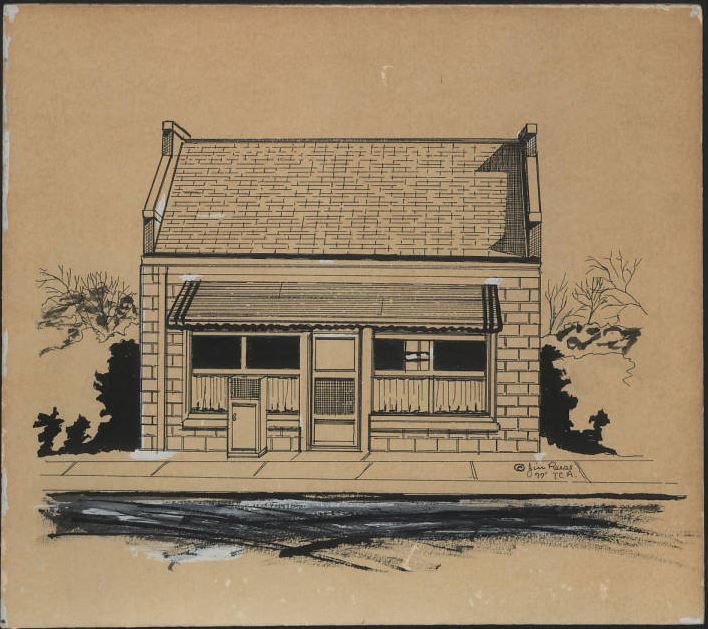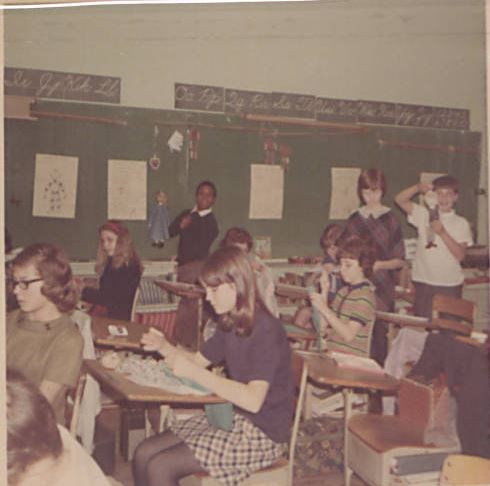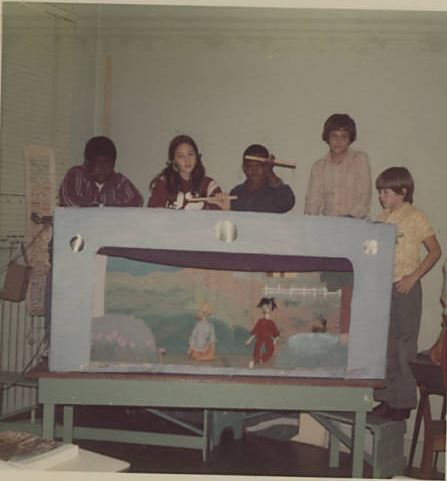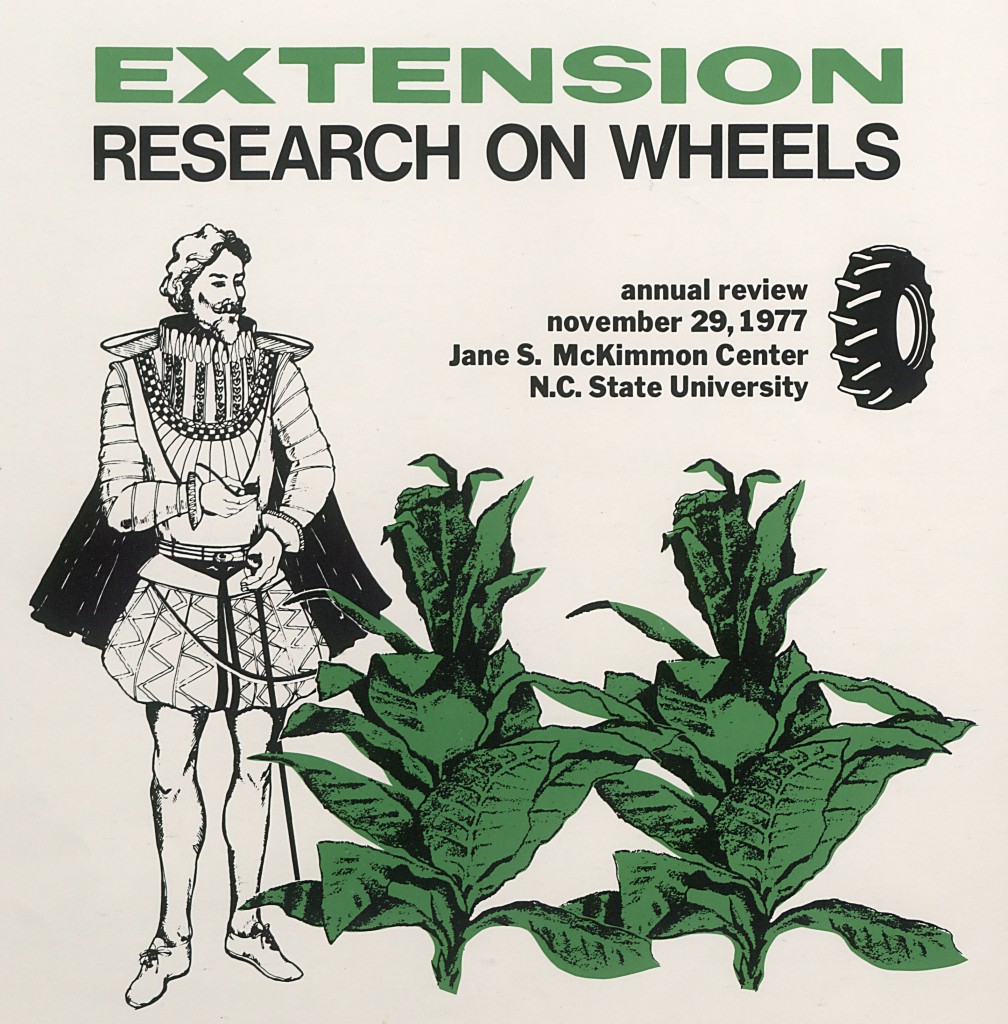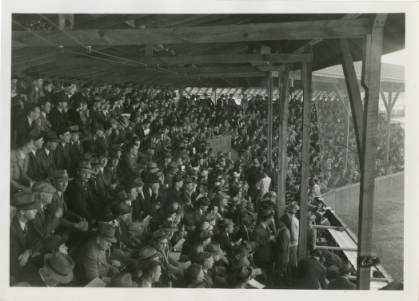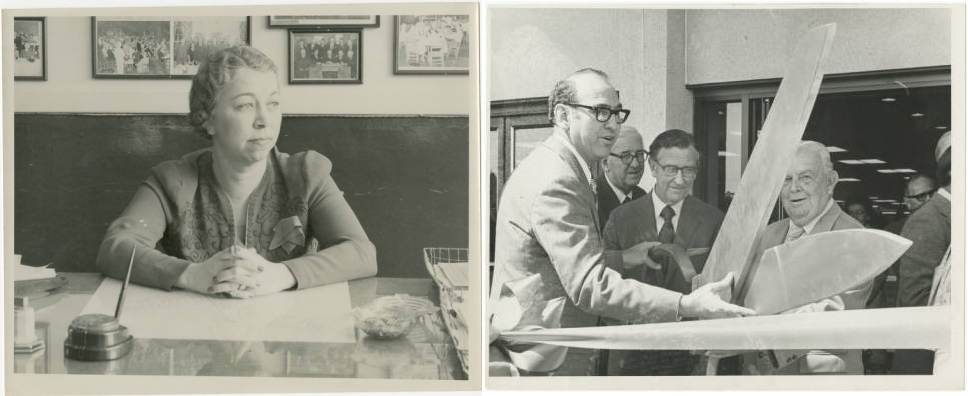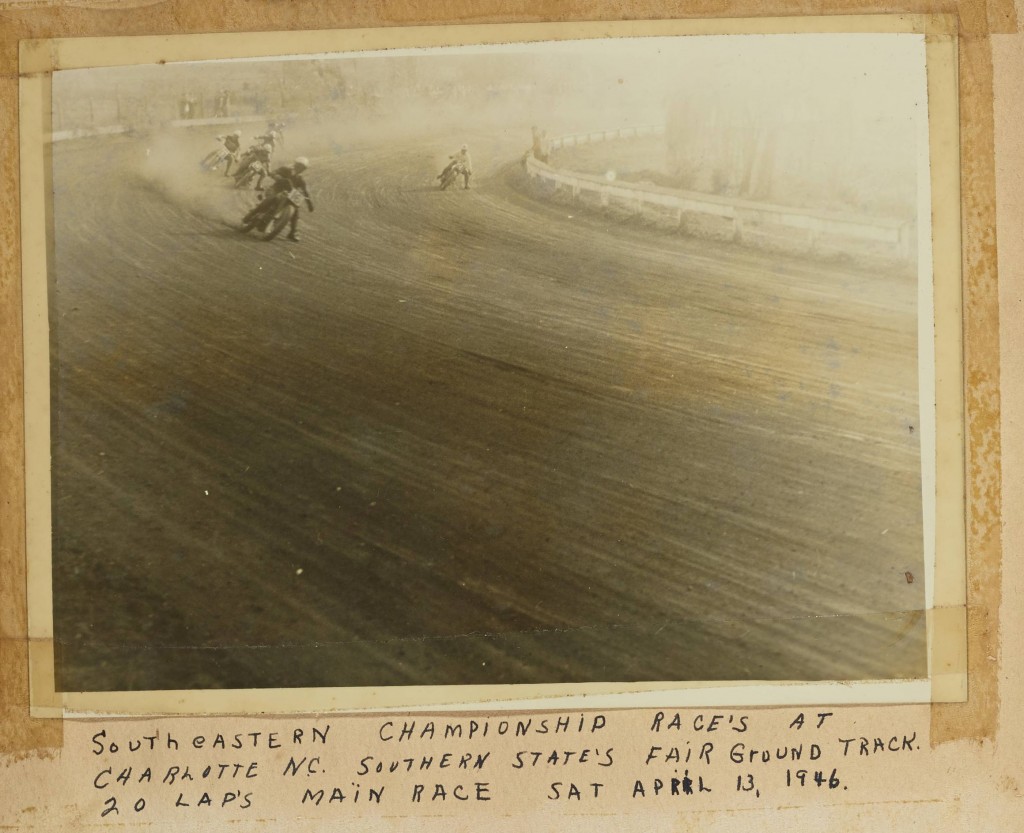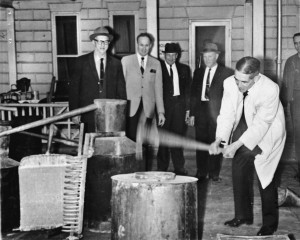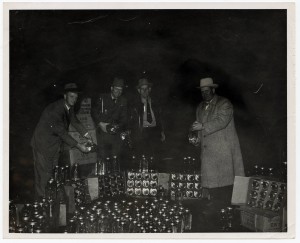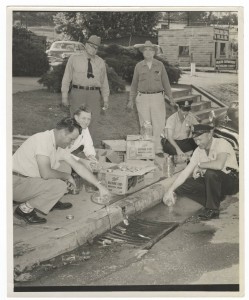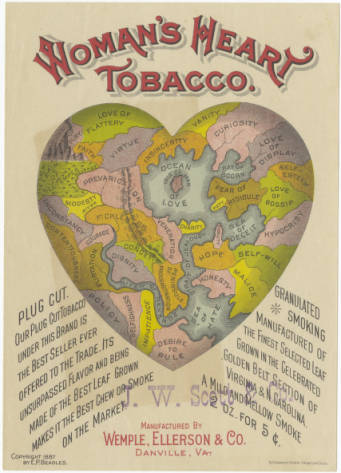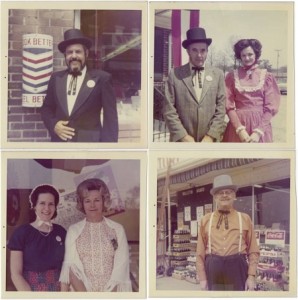Monday Matchup
Here on our blog, we’ll occasionally be featuring “matchups” that showcase relationships between different items in our collection. Today’s matchup? An image from the Tufts Archives in Pinehurst and newspapers from the Southern Pines Public Library.
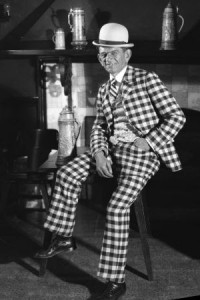
Sam Lacks
It’s probably easy to understand why this photo caught our eye. From the Tufts Archives of Pinehurst, NC, it’s of Sam Lacks in 1928. Who was Mr. Lacks?
The information with the photo states he was the “Carolina Bellman.” But you can start to fill in more details about Lacks’ life from our collection, using local newspapers. DigitalNC includes issues of The Pilot from 1920-1948. Courtesy of the Southern Pines Public Library, The Pilot was and is published in Moore County. Using The Pilot, we find out the following:
Mr. Lacks was the “genial” “veteran doorman” of the Carolina Hotel (now part of the Pinehurst Resort). He and his wife, known only as “Mrs. Lacks,” had at least two children: Stanley and Leonard. In 1932, Mrs. Lacks was grade mother for the 11th grade and Leonard Lacks was a junior at UNC Chapel Hill. The family summered in New Hampshire.
Both Stanley and Leonard attended Duke University. The family had connections with Massachusetts, especially Boston, and traveled there frequently. They lived in Marlboro Apartments in Pinehurst.
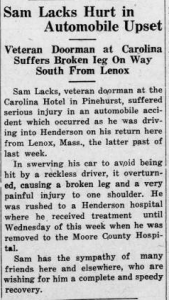 Mr. Lacks unfortunately made headlines when he broke his leg in an auto accident in 1931 (see right), but we’re kindly informed that he was making a “satisfactory recovery” two weeks later. In 1936, he served as Santa Claus at one of the annual Children’s Christmas parties at the hotel. That article calls him the hotel’s “general factotum.”
Mr. Lacks unfortunately made headlines when he broke his leg in an auto accident in 1931 (see right), but we’re kindly informed that he was making a “satisfactory recovery” two weeks later. In 1936, he served as Santa Claus at one of the annual Children’s Christmas parties at the hotel. That article calls him the hotel’s “general factotum.”
The last reference we could find, in 1941, mentions Mr. and Mrs. Lacks, their son Stanley, and Stanley’s new bride — all returning from a trip to Massachusetts.
If Mr. Lacks was as popular as the newspaper suggests, he may still be well remembered around Pinehurst.
